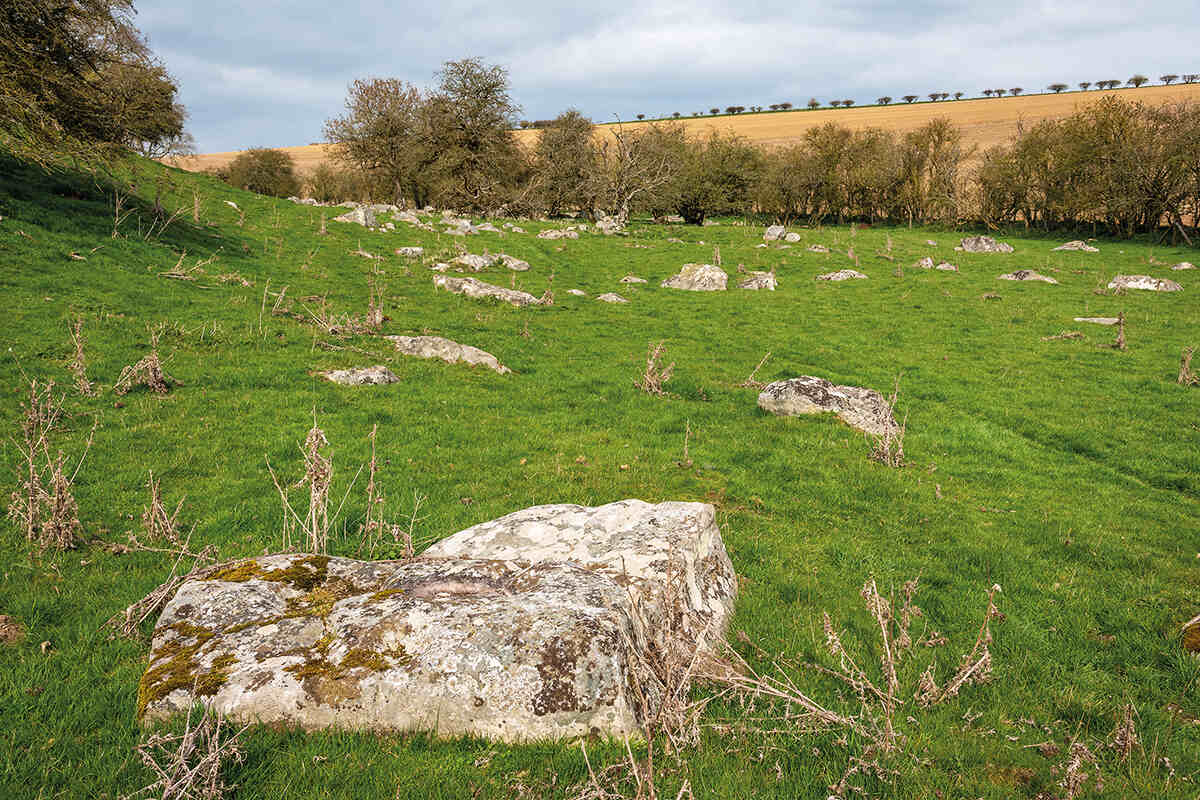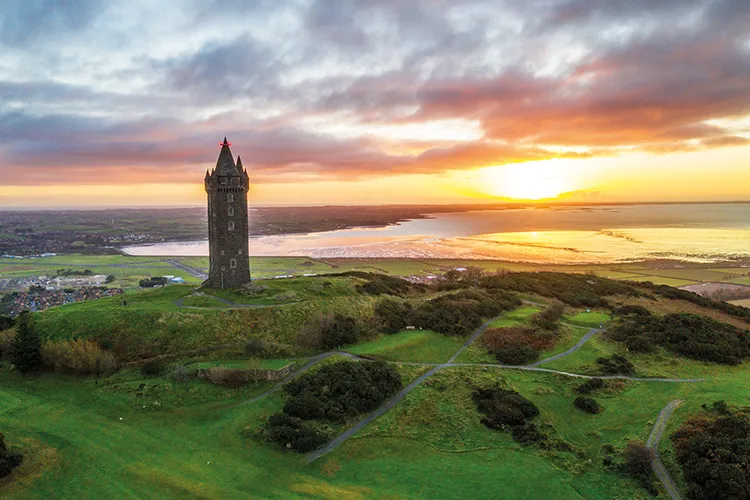
Rory Walsh wades through a river of stones running through the Marlborough Downs
Discovering Britain
View • Rural • South West England • Web Guide
Wiltshire is dotted and ringed with ancient barrows, dolmens and stone circles. Stonehenge and Avebury attract millions of visitors a year, but one of the county’s most curious sites and sights is more secluded. Just outside Fyfield village, drivers on the A4 pass a stile. Crossing it on foot leads into a tree-lined field. Peppering this part of the Marlborough Downs are hundreds of large, mottled-grey rocks. This is Piggledene, home to a river of stones.
The downs are an area of undulating chalkland, but the stones aren’t made of chalk; Piggledene’s stones are glacial erratics forged by desert heat. About 66 million years ago, the downs were covered by layers of sand and gravel. Silica in the sand fused these layers into a sheet of rock. Then temperatures cooled. Repeated freezing and thawing over millions of years fragmented the sandstone into boulders. Around 2.5 million years ago, glacial meltwater carried the boulders downhill.
Ordnance Survey maps record the rocks as ‘Sarsen Stones or Grey Wethers’. ‘Sarsen’ derives from ‘sar stan’, Saxon for ‘troublesome stones’. ‘Wethers’ are castrated male sheep. Scattered among the grass, the stones resemble a grazing flock, especially from a distance.
Many of the stones are split or cracked. In other places, the sarsens have the tips of metal chisels embedded in them. Tough and durable, sarsens have provided building material from at least the Neolithic and Bronze Ages. Stonehenge and Avebury contain sarsen blocks, as do cottages in nearby villages such as Lockeridge. By the mid-19th century, extracting the stone had grown into a significant trade. Piggledene’s sarsen stream was at risk of running dry.
DISCOVER MORE ABOUT BRITAIN…
In 1907, a public appeal to preserve the stones raised £612, enabling the National Trust to purchase the land. The stones are now further protected as an SSSI and part of Fyfield Down National Nature Reserve. Besides their geological interest, Piggledene’s stones support the valley’s ecosystem. Several rare mosses and lichens thrive on them, including Buellia saxorum, a variety unique to sarsens.
Walking around Piggledene today, it’s tempting to imagine views unchanged for centuries. Daniel Defoe, Samuel Pepys and Christopher Wren all paused here while travelling between London and Bristol (Wren suggested that the sarsens had volcanic origins). Throughout the ages, visitors entering these woods leave thinking of stones.








